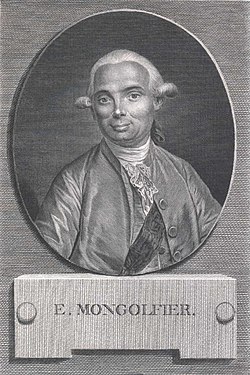AY Honors/Hot Air Balloons/Answer Key
Template:Otheruses The Montgolfier brothers, Joseph Michel Montgolfier (26 August 1740 – 26 June 1810) and Jacques Étienne Montgolfier (6 January 1745 – 2 August 1799), invented the montgolfière, or hot air balloon. Their invention was the first aircraft to carry humans into the sky.
Early years
The brothers were born into a family of successful paper manufacturers in Annonay, south of Lyon, France. Their father, Pierre (1700-1793), established his eldest son Raymond (1730-1772) as his successor. As a result, the younger sons were initially sent away to school to learn other professions.
Joseph possessed a typical inventor's temperament -- a maverick and dreamer but impractical in terms of business and personal affairs. Clever and highly inventive by nature, he was rebellious towards his formal education -- twice running away from school. Nonetheless, his natural curiosity led him to a very successful self-education in the then emerging physical sciences. He eventually returned to the family homestead, but was only peripherally involved in the family paper-making business.
Étienne (as Jacques Étienne was more generally known) had a much more even and businesslike temperament than Joseph. He was initially sent to Paris to train as an architect. However, after the sudden and unexpected death of Raymond in 1772, he was recalled to Annonay to run the family business (no serious consideration was given to the elder Joseph in this role, given his uneven behaviour.) In the subsequent 10 years, Étienne applied his talent for technical innovation to the family business (papermaking was a high tech industry in the 18th century.) He succeeded in incorporating the latest innovations of the day into the family mills. His work led to recognition by the government of France as well as the awarding of a government grant to establish the Montgolfier factory as a model for other French papermakers.

